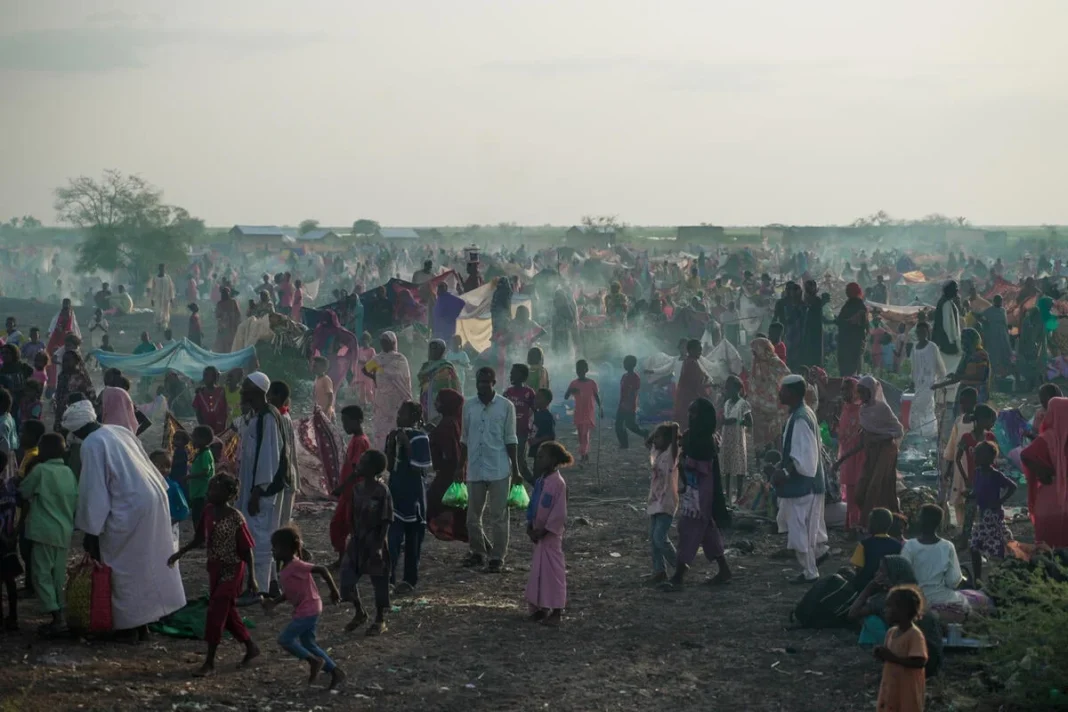Sudan, 20 November 2023 (TDI): Seven months into the conflict, Sudan is undergoing one of the fastest-evolving global crises, marked by unprecedented needs emerging within an unusually short timeframe.
Since mid-April, approximately 6.2 million individuals, equivalent to one in every eight people in the nation, have been displaced due to the conflict between the Sudanese Armed Forces (SAF) and the Rapid Support Forces (RSF).
These displaced individuals have sought refuge both within Sudan and in neighboring countries.
According to the International Organization for Migration Displacement Tracking Matrix (IOM DTM), nearly 5 million people have been internally displaced within Sudan, dispersing across 5,312 locations spanning all 18 states.
Of these, about 3.4 million (constituting 68% of all internally displaced people) originated from Khartoum, seeking refuge primarily in the River Nile, followed by South Darfur, East Darfur, Aj Jazirah, White Nile, North Darfur, Northern Sennar, and other states.
According to the UN Refugee Agency (UNHCR), as of October 8, approximately 1.2 million people had simultaneously crossed borders into the Central African Republic, Chad, Egypt, Ethiopia, and South Sudan.
The disruption of basic public health services has triggered an upsurge in disease outbreaks, with close to 3,000 suspected cholera cases, including 95 deaths, reported across seven states as of November 12.
Other diseases, such as measles, malaria, and dengue, are also proliferating in various states due to challenges in healthcare delivery, including insecurity, displacement, and limited access to essential resources.
Also read: Hunger Emergency looms for South Sudan
The conflict’s ripple effects are profoundly impacting education, depriving approximately 12 million children of schooling since April, with a staggering total of 19 million children now out of school in Sudan.
Save the Children (SC) and the UN Children’s Agency (UNICEF) highlight that 6.5 million children, or one in every three children in the country, have lost access to school due to increased violence and insecurity.
Beyond the humanitarian front, livelihoods for millions of people have been devastated, contributing to a projected 12% shrinkage in the economy for 2023, according to the World Bank.
The conflict has not only halted production but also destroyed human capital and eroded state capacity, resulting in a comprehensive collapse in economic activity.
Despite numerous challenges, humanitarian organizations have managed to reach around 4.5 million people with life-saving assistance and 5.5 million with livelihood support since the conflict’s onset.
The urgent need for additional funding, however, overshadows this positive impact.
The 2023 Sudan Humanitarian Response Plan (HRP), requiring $2.6 billion to assist 18.1 million people in desperate need, was only 33.4% funded as of November 15, with $856.2 million received.
The dire need for resources underscores the interconnected nature of addressing the multifaceted challenges faced by Sudan.
Iffat Masood is Contributor and Content writer on THE DIPLOMATIC INSIGHT, and also Ambassador from IAMCR. She is perusing her PhD. from UAB Barcelona, Spain in Audio-Video Communications and Advertising.



